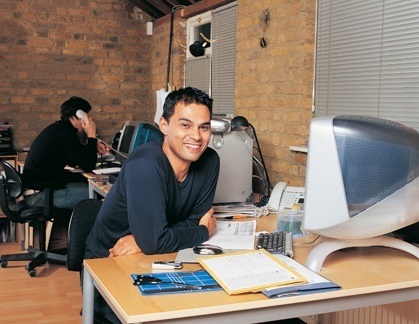Industrial Designer Job Description
See what you should bring to the table once you decide on an industrial design career.
Industrial designers are constantly striving to produce innovations we love.
Working closely with businesses and manufacturers, industrial designers take products and product ideas and make them user-friendly, ergonomic and attractive to consumers.
In an industrial design position, you may design products ranging from a set of tools to the latest car model.
Although you may focus your industrial design career on a specific product, your training can be applied in almost endless ways.
Job Responsibilities
- Working with clients to determine the design requirements
- Brainstorming ideas and creating models
- Designing products with the needs and wants of a specific audience in mind
- Creating drawings either by either sketching or using CAD software that visually depicts design ideas
- Working with design technology
- Collaborating with mechanical engineers and manufacturers
- Participating in product testing
- Determining whether a design is practical by gauging product safety and function
Skills Needed for an Industrial Design Job
- Creativity: You'll need to look at existing products and determine how they could work or look better—see beyond the current reality to what's possible. You'll also weigh in on the functionality of new products in development. Anticipating consumers' needs and how they will attempt to use the product is a big part of being an industrial designer.
- Technical Skill: Industrial designers work with an array of design technology to complete their projects. CAD training and experience is essential, because you use software to develop designs in two and three dimensions.
- Teamwork: As in any job, whether you are working and communicating with your customer or with other members of the design team, effectively collaborating with others is necessary to succeed in an industrial design career.
Starting Out
A variety of industrial design programs and degrees will give you the training you need. A bachelor's degree is essential at the beginning of your industrial design career. Most employers require at least a bachelor's for entry-level positions. However, master's degrees are becoming more common in the field and may be necessary in some cases to be competitive. Other must-haves for a successful design career include the following:
- A strong portfolio: An impressive portfolio can trump an advanced degree. Document your best work, and show employers your creativity, versatility and technical expertise.
- Adding related work experience: Look for internships that will help get your industrial design career started. If you're a student, your school may have career resources to help you set up an internship. Take advantage of the opportunity to learn from professionals and gain experience in the field.
Industry Outlook and Salaries
Manufacturers are always looking for ways to improve their products and boost their sales by releasing the latest and greatest models. Consumer demand for newer and better products ensures that the industrial design business will continue to grow.
According to the U.S. Bureau of Labor Statistics 2023 Occupational Employment Statistics, industrial designers can expect the following:
- 2% job growth through 2032 (slower than average)
- Strong competition for jobs
- A median annual salary of $76,250
Categories
Graphic Design Degree & Career Guide
- 4 Creative Ways to Use Your Graphic Design Degree
- 5 Graphic Design Portfolio Tips
- Advertising Degrees and You
- Advertising Design Job Description
- Advertising Designer Profile
- Careers in Computer-Aided Design
- Choosing Industrial Design Programs
- Education Initiatives Designed to Boost Enrollment in CAD Drafting School
- Graphic Design and Technology
- Graphic Design School and Career Guide
- Graphic Designer Job Outlook
- Graphic Designer Profile
- How to Get Ready for Graphic Design School
- Illustrator Career Paths: Job Duties, Education and More
- Industrial Design vs. Graphic Design
- Industrial Designer Job Description
- Industrial Designer Profile
- On-the-Job Graphic Design Training

